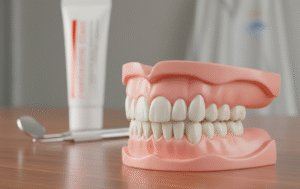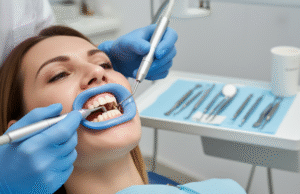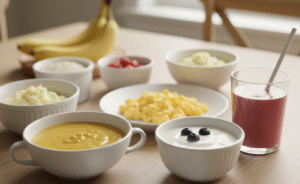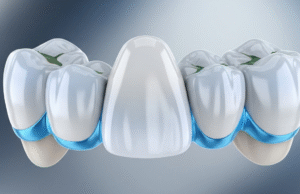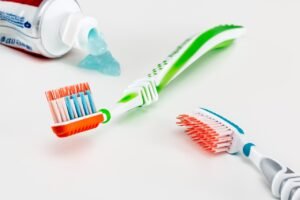Getting a dental filling is a common procedure designed to restore the function and integrity of a tooth damaged by decay or trauma. While the process itself is straightforward, many patients wonder about aftercare, particularly when it comes to eating. Can you eat immediately after a dental filling, and if not, how long should you wait? This guide covers everything you need to know about eating after a dental filling to ensure a smooth recovery.
What Happens During a Dental Filling?
A dental filling involves removing decayed or damaged portions of a tooth and filling the cavity with a durable material such as composite resin, amalgam, or gold. The procedure restores the tooth’s shape, function, and appearance while preventing further decay.
The process generally includes:
- Numbing the Area: A local anesthetic is applied to minimize discomfort.
- Removing Decay: The dentist uses tools to clean out the cavity.
- Filling the Tooth: The chosen material is applied and hardened, often using a special light.
Once the procedure is complete, patients are often curious about resuming normal activities, particularly eating.
When Can You Eat After a Dental Filling?
The timing depends on the type of filling material used and whether anesthesia was involved:
1. Composite Fillings
Composite fillings harden quickly, often immediately after the procedure. In most cases, you can eat shortly after the filling is placed, though it’s best to avoid hard or sticky foods for the first 24 hours.
2. Amalgam Fillings
Amalgam fillings take longer to harden—about 24 hours. It’s advisable to wait several hours before eating and avoid chewing directly on the side of the filling for at least a day.
3. Anesthesia Considerations
If anesthesia was used, it’s essential to wait until the numbness subsides before eating. Chewing while numb can lead to accidental bites or burns.
Foods to Eat After a Dental Filling
In the hours following a filling, your teeth may be sensitive, making soft and non-irritating foods the best choice. Consider the following options:
- Mashed potatoes
- Yogurt
- Applesauce
- Scrambled eggs
- Smoothies (without a straw, to avoid suction issues)
- Soup (warm, not hot)
These foods minimize pressure on the teeth and reduce the risk of dislodging the filling or irritating the area.
Foods to Avoid After a Dental Filling
To protect your filling and allow your tooth to heal, it’s wise to avoid:
- Hard Foods: Nuts, hard candies, and crusty bread can stress the filling.
- Sticky Foods: Chewing gum, caramel, and toffee may pull on the filling.
- Hot or Cold Foods and Drinks: Temperature extremes can cause sensitivity or discomfort.
- Sugary Foods: Excess sugar can promote decay around the filling.
Managing Sensitivity After a Filling
It’s normal to experience some sensitivity to hot, cold, or sweet foods after a dental filling. This sensitivity usually subsides within a few days to weeks. Here are some tips to manage it:
- Use Desensitizing Toothpaste: These toothpastes can help reduce sensitivity over time.
- Avoid Extreme Temperatures: Stick to lukewarm foods and drinks.
- Chew Gently: Chewing on the opposite side of the filling can minimize pressure.
- Rinse with Saltwater: A warm saltwater rinse can soothe irritated tissues.
If sensitivity persists for more than a few weeks, contact your dentist to rule out any issues.
Tips for Eating After a Filling
To ensure your recovery goes smoothly, follow these tips:
- Chew Slowly: Be mindful of the area with the filling to avoid unnecessary stress.
- Start Small: Begin with soft foods before progressing to your regular diet.
- Avoid Alcohol: If your dentist used a temporary filling or specific materials, alcohol could weaken the bond.
- Stay Hydrated: Drinking water helps flush out food particles and maintain oral hygiene.
Signs of Trouble After a Filling
While most fillings are successful, certain symptoms may indicate complications:
- Persistent sensitivity or pain
- Difficulty chewing
- Cracks or roughness in the filling
- Food consistently getting stuck near the filling
If you experience any of these issues, schedule a follow-up appointment with your dentist.
Hummingbird Dental: Richmond Hill’s Leading Emergency Dental Clinic
When a dental emergency strikes in Richmond Hill, Hummingbird Dental is the clinic you can count on for immediate, high-quality care. Located at 10376 Yonge St #202, Richmond Hill, ON L4C 3B8, Hummingbird Dental is renowned for its responsive and compassionate approach to emergency dental situations. Whether it’s a sudden injury, a painful toothache, or a dental issue that needs urgent attention, the experienced team at Hummingbird Dental is ready to help.
Contact Hummingbird Dental at +1 647-370-2024 or via email at info@hummingbirddental.ca to receive the emergency dental care you need. Their team is dedicated to providing quick and effective treatment to alleviate pain and protect your oral health.
FAQs About Eating After a Dental Filling
1. Can I eat immediately after a composite filling?
Yes, composite fillings harden quickly, allowing you to eat soon after the procedure. However, it’s best to stick to soft foods initially.
2. How long should I wait to eat after an amalgam filling?
Amalgam fillings take about 24 hours to fully harden. Wait at least a few hours before eating and avoid hard foods during this time.
3. What foods are safe to eat after a filling?
Soft foods like mashed potatoes, yogurt, and scrambled eggs are ideal immediately after a filling. Avoid hard, sticky, or hot foods.
4. Is it normal for my tooth to feel sensitive after a filling?
Yes, mild sensitivity is common after a filling and usually subsides within a few days to weeks. If it persists, contact your dentist.
5. Can I drink coffee after a filling?
You can drink coffee, but ensure it’s lukewarm rather than hot to avoid sensitivity or irritation.
Conclusion
Eating after a dental filling doesn’t have to be complicated. By understanding the type of filling you have and following your dentist’s recommendations, you can resume your normal diet with minimal disruption. Prioritize soft and non-irritating foods in the immediate aftermath and avoid habits that could jeopardize the filling, such as chewing on hard or sticky substances.
Dental fillings are an effective way to restore your oral health and function, and with proper care, they can last for many years. If you have concerns about eating after a filling or notice persistent discomfort, consult your dentist for guidance. A little care and attention can go a long way in protecting your smile.

